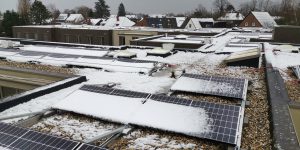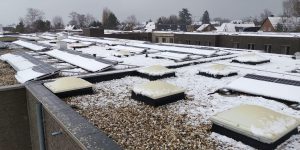

Since yesterday, our solar panels are covered with a layer of snow, but what is the effect on their efficiency?
During the winter months, solar panels still provide energy, but much less. The output is also much lower on cloudy days. Solar panels perform best from March through October. During this period, about 80% of the energy output is generated on an annual basis.
Remove snow yourself or not at all?
When it does snow in our country, it is usually melting snow or just a thin layer. It is best to be patient and let the sun do its work. Often the temperature does not drop below freezing and the snow will slide off the panels by itself.
Sometimes it does happen that a thicker layer of snow remains, and that can be troublesome for solar panels. When snow stays on the panels longer, there is yield loss. Still, it is not worth climbing onto your roof for this. The efficiency is lower during this period anyway, so you won't lose much.
If you can't contain yourself and still want to clear the panels of snow, some tips:
First and foremost: be careful. Crawling up a roof is never without risk. In doing so, think carefully about how you will clear the panels of snow. Each solar panel is equipped with a dirt-repellent layer. If you scratch this you damage the solar panel itself and the protective layer. This will affect the efficiency and the lifespan of your panels.
Salt or cleaning products are also not suitable for treating solar panels. The best solution is a squeegee with a mop around, so you definitely don't damage the panels. Or just wait patiently ?!




